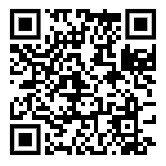VOA Learning English
New US Jet Breaks Sound Barrier in First Flight Test
An experimental aircraft developed by a private American company broke the sound barrier during a recent flight test.California-based Boom Supersonic built the plane named XB-1.The company said the aircraft reached a speed of Mach 1.05 during a test on January 28.The test flight operated from the Mojave Air and Space Port in Mojave, California.Any speed greater than Mach 1.0 breaks the sound barrier and is considered supersonic.The American space agency NASA explains that at sea level, the speed of sound is estimatedto be about 1,236 kilometers per hour.In a statement, Boom Supersonic said the XB-1 demonstrator aircraft climbed to morethan 35,000 feet before reaching Mach 1.0.It recorded the speed within 11 minutes of taking off.The company also released a video feed of the supersonic test flight.The company said in a press release, historically supersonic aircraft have been the work ofnation states developed by militaries and governments.But the latest flight made the XB-1 the world's first independently developed supersonic jetto break the sound barrier, Boom Supersonic said.The company's founder and chief executive officer, Blake Scholl, said XB-1's supersonicflight demonstrates that the technology for passenger supersonic flight has arrived.Boom Supersonic launched in 2014 with the goal of making high-speed travel mainstreamand enabling a new world of human connection.With that in mind, the company has been working to develop a supersonic passenger airliner called Overture.The aircraft would carry up to 80 passengers.Boom Supersonic is one of several American companies seeking to develop supersonic flight vehicles.NASA is also working on a supersonic aircraft in partnership with a U.S. contractor.The last time supersonic travel was available to passengers was 2003.That is the year the Concorde, the world's first supersonic passenger jet aircraft, stopped service.Britain and France jointly operated the Concorde.But the joint operation between British Airways and Air France suffered several business difficultiesthat led to the decision to stop flying the supersonic planes.Some of the difficulties were linked to publicity about a deadly Concorde crash in 2000.That incident involved an Air France airliner crashing shortly after taking off from Paris.The crash claimed a total of 113 lives.Boom Supersonic says its planned Overture airliner will be designed to transport passengersfrom the U.S. East Coast across the Atlantic to Europe in about three and a half hours.The flight with normal passenger jets takes about eight hours.Amy Marino Spoert is the president and chief executive officer at the National Aeronautic Association.She told the Associated Press the latest supersonic test flight suggests the future of aviation is here and now.Spoert added not only is there hope for faster and better commercial flight, but Boom provesthat it can be done sustainably.Boom Supersonic has said its planned supersonic airliner will be designed to run on up to 100% sustainable aircraft fuel.Such sustainable fuels are made from non-petroleum products such as food waste or other biomass materials.Both XB-1 and Overture are made mostly from a carbon-based composite material to providea strong, lightweight structure, the company said.NASA's supersonic aircraft, built together with Lockheed Martin, is called X-59.It is also an experimental plane that is seeking to test the level of noise produced by supersonic travel.Currently supersonic flights are banned over land because of the loud noise they produce.NASA has explained it plans to carry out testing this year of the X-59 aircraft, which hasbeen designed and engineered to operate at lower noise levels than other supersonic aircraft.The tests to take place at supersonic test centers in California are designed to provethe quiet supersonic technology works as designed.NASA said that after that testing is done, the agency plans to begin community reaction studies beginning in 2026.These will involve flying the X-59 over several cities and then asking people on the groundto share their thoughts on the level of noise they heard.NASA has said the X-59, which measures 30 meters long and 9 meters wide, is expectedto fly at 1.4 times the speed of sound.That is about 1,500 kilometers per hour. I'm Brian Linn.


